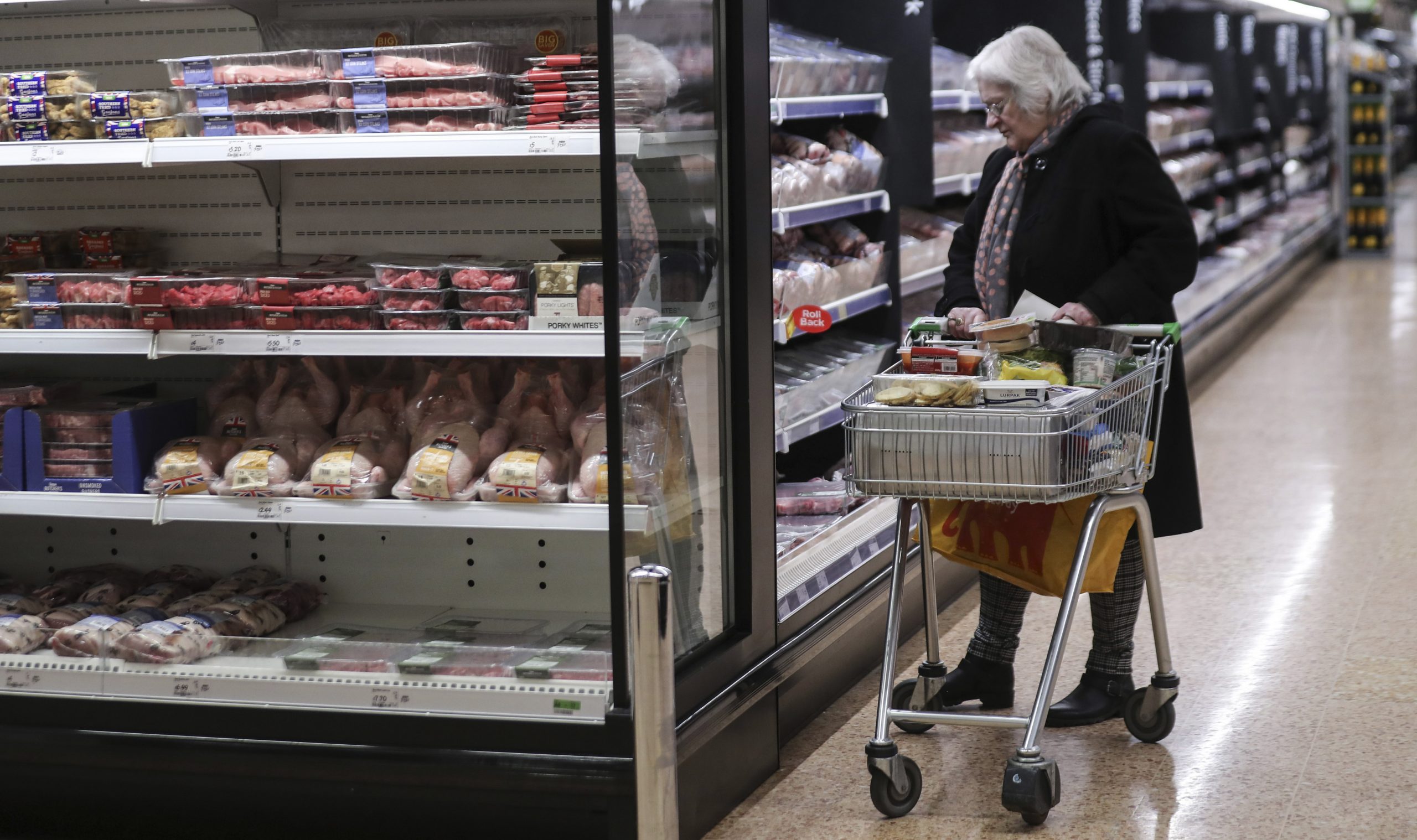
The turnover of the organized food retail trade continues its upward trend in 2023, showing as a whole a positive trend for the first quarter of the year of +8.2% (YTD data up to April 02, 2023), compared to the corresponding last year period of time.
As the NielsenIQ report states, this trend is mainly driven by food, both fresh (+8.1%) and processed, and beverages (+8.2%), mainly due to their significant contribution to the sales of sector.
In addition, the trends are positive for the major categories of household use, as well as personal care, which grow by +12.1% and +7.6% respectively. However, what is interesting is that if we break down the overall +8.7% FMCG trend, it is clear that this growth continues to be purely inflationary, as prices increased by 12.2%, while volumes respectively, they fell by -3.5%.
The impact of inflation
In this strongly inflationary environment, the share of private label products saw a significant increase, from 23.8%, which was at the end of 2022, to 25.4%, in the market that also includes the discount channel, while at the same time the manufacturers of branded products are trying to become even more competitive by further intensifying their promotional intensity, from 66.7% at the end of last year, to 68.2%.
The regions that are ahead
Further analyzing the market across the different store types, as well as the different geographic areas, as defined by NielsenIQ, some notable findings emerge, as well:
With regard to the different types of stores, the largest growth is shown by the largest stores (over 2500 m2), at +11.5%, which may be due, among other things, to the fact that buyers choose the largest stores, in which in addition to greater variety can find more offers available, as well as more competitive prices.
At the level of geographical regions, the regions of Crete and the Peloponnese continue to show the most positive growth trends (+15.4% and +6.8% respectively), but at the same time this increase in turnover seems to be associated with stronger inflationary pressures in these areas, compared to the country as a whole.
Products
Focusing on the progress of specific product categories, paper products shows particularly high growth rates (indicative: toilet paper: +48.6%, kitchen paper +37.0%), mainly due to the very large increase in their average price.
On the contrary, categories linked to the pandemic, such as hand sanitizers (-58.2%), as well as elastic gloves (-30.1%), continue their downward trend, while the seed oils category also shows a significant a decrease in its total sales (-16.9%) as compared to the high base of 2022, due to the outbreak of the war in Ukraine and the shortages that had been observed in the market.
As a more general comment on the first quarter of 2023, we could note that in terms of the course of fast-moving consumer goods there seems to be a relative de-escalation in terms of inflationary pressure, compared to the last quarter of 2022 (+13.2% vs . 12.2%). However, if we take into account the fact that in the first quarter of 2022 the market had already started to register a price increase of +3.3% this means that the current inflationary pressure is coming to be added to an already elevated base. At the same time, the downward trend in volumes appears to be more moderate in this year’s first quarter (-3.5%) than in 2022 (-7.0%), which indicates that consumers are showing a more moderate reaction to increase in prices (decrease in price elasticity).
Latest News

Deadline for Postal Vote Registration Expires on Mon.
More than 157,000 Greek citizens had registered on the relevant online platform so far

Orthodox Palm Sunday Today; Shops Open in Greater Athens-Piraeus Area
Orthodox Holy Week begins on Monday, April 29, and ends on Sunday, Easter Sunday or Great and Holy Pascha (May 5)

Greek Retailers Remain Optimistic About Easter Shoppers’ Turnout
While stores are expected to be open on Sunday, April 28, the majority of Easter shoppers will likely do their shopping during the Holy Week, following the deposit of Easter bonuses

Europeche: Greek Apricot Production Recovers
Europeche forecasts the production will bounce back despite a slight decrease in varieties attributed to high winter temperatures

Bank of Greece (BoG): Business-Household Deposits Up 1,675bln in March 2024
In March 2024, the monthly net flow of credit to the general government was negative by 469 million euros

FT: Greece’s Economic Rebound a Balance of Growth and Poverty
Eurostat data revealed a significant 10.8% drop in Greek public debt relative to GDP in 2023, alongside a 2% economic expansion, outpacing Germany's performance.

Lavrio Port Authority Next Up for Privatization
A deadline for the submission of expressions of interest is May 14, 2024

Eurostat: Greece Records Largest Drop in Natural Gas Prices in 2nd Half of 2023
The price of electricity and natural gas in Europe was down following a substantial surge that began before the Russian invasion of Ukraine and peaked in 2022

GEK TERNA Still Considers Leveraging Concessions Portfolio as Financial Tool
President and CEO of Gek Terna George Peristeris explained the company's plans on Tuesday on the sidelines of the inauguration of sections of Greece's E65 highway

NielsenIQ: 3% Supermarket Revenue Increase in Q1
Private label products are gaining traction, comprising 25.4% of shopping basket shares, up from 24.7%










































 Αριθμός Πιστοποίησης Μ.Η.Τ.232433
Αριθμός Πιστοποίησης Μ.Η.Τ.232433